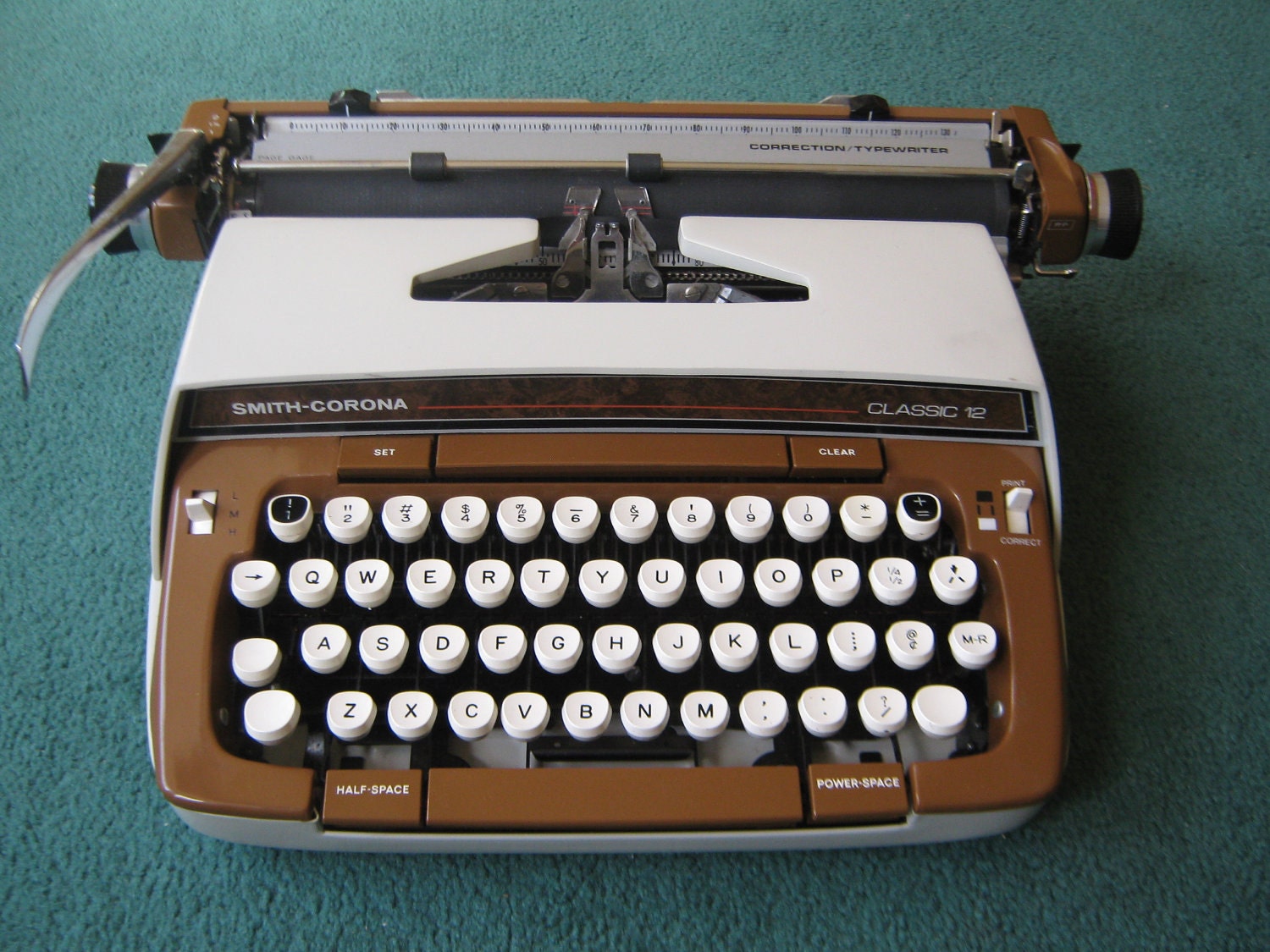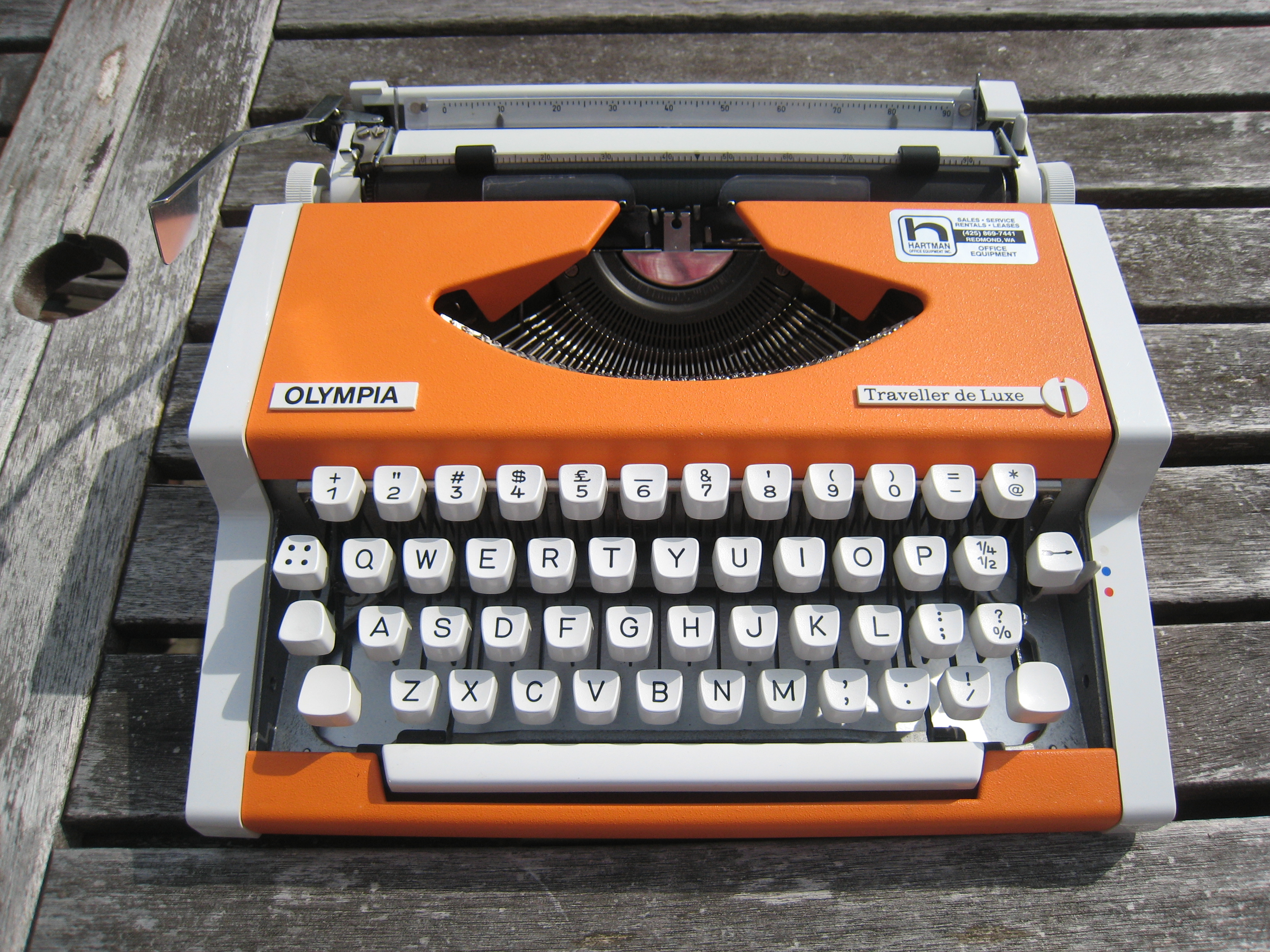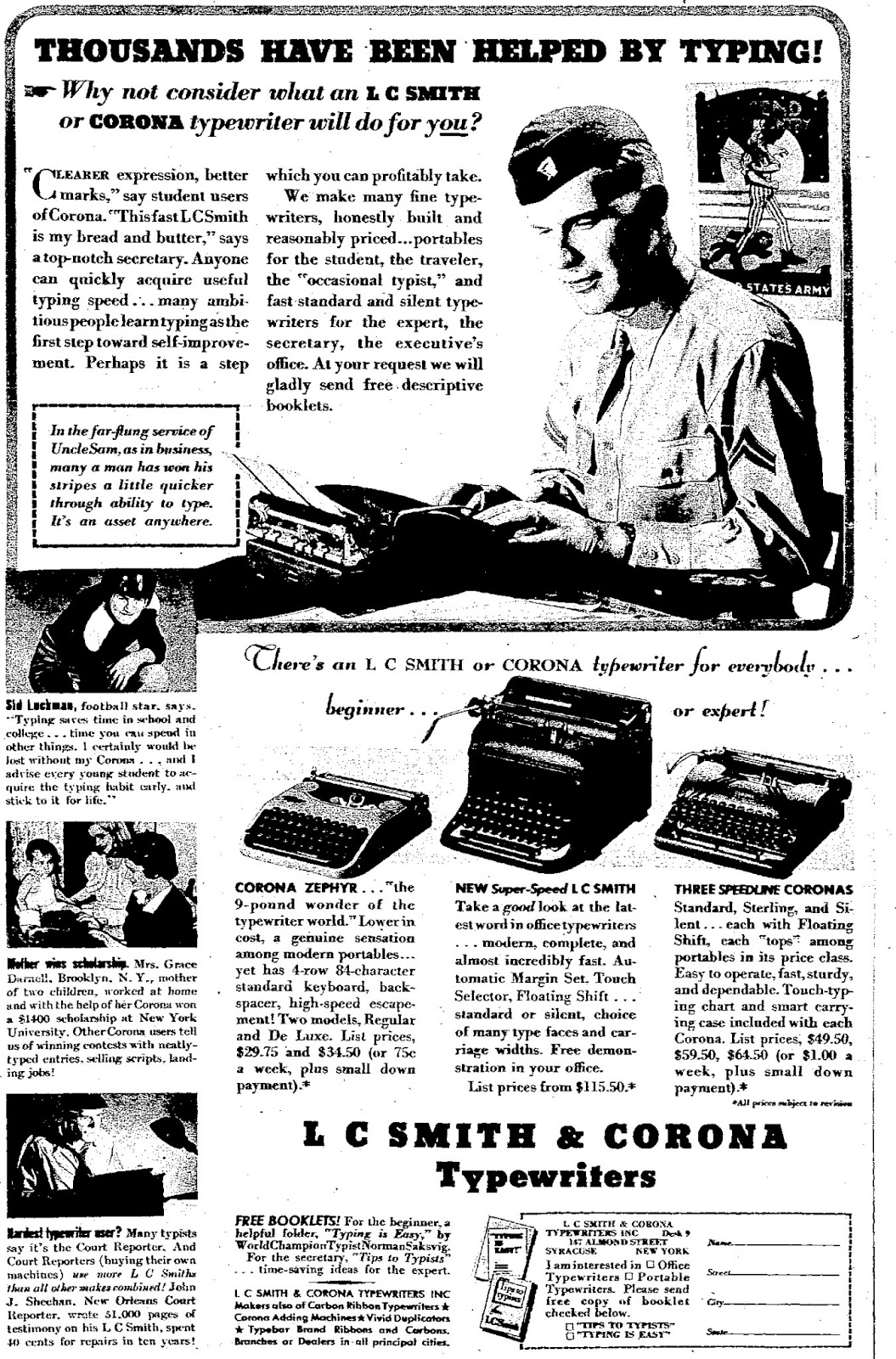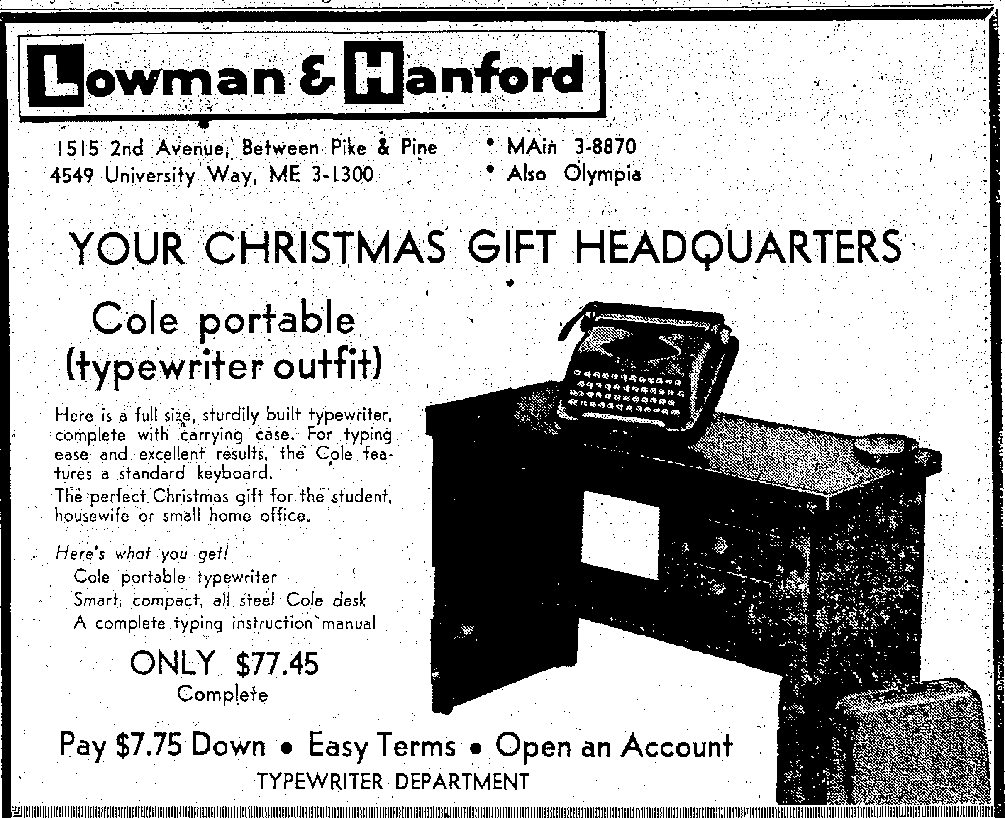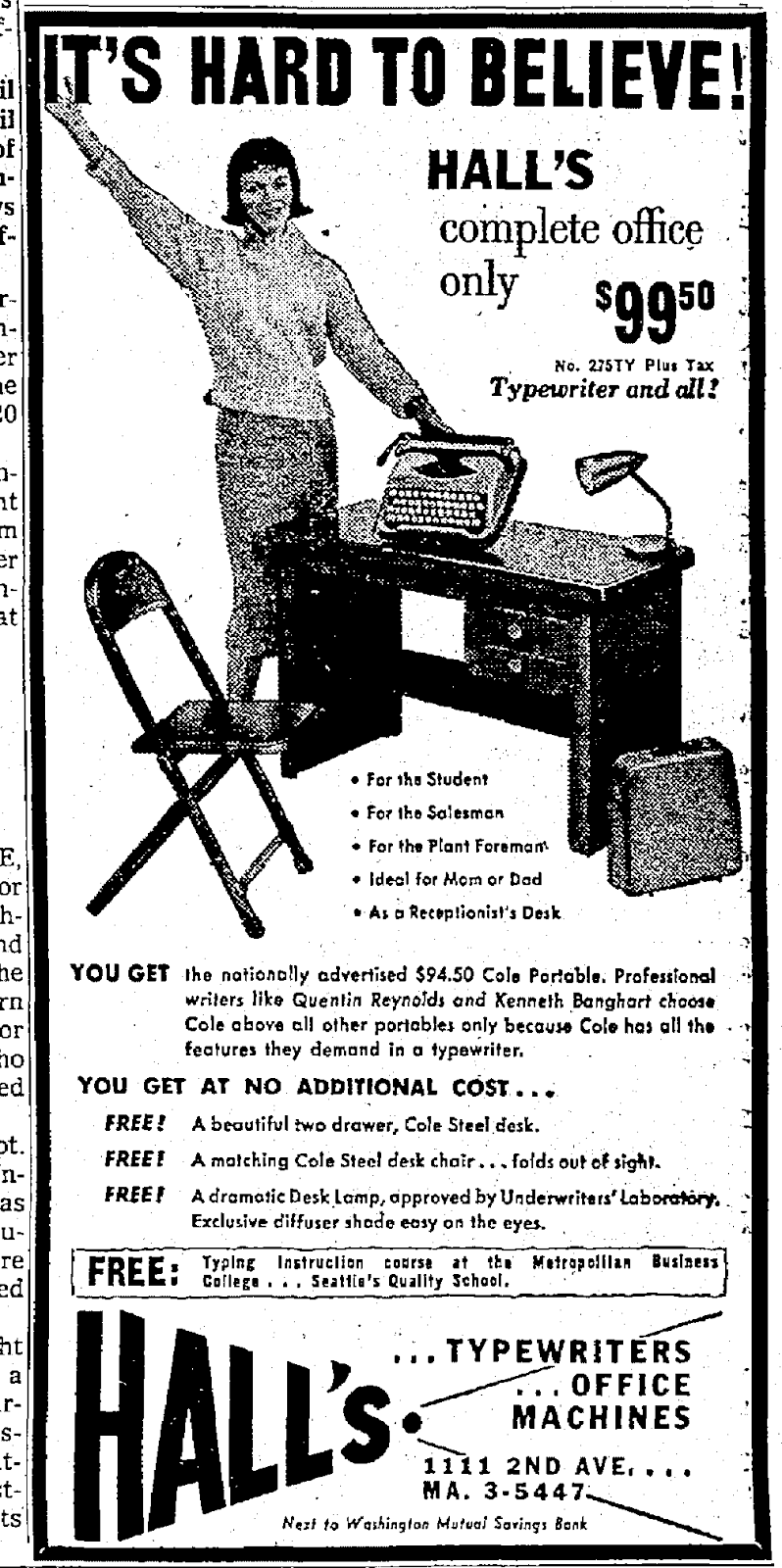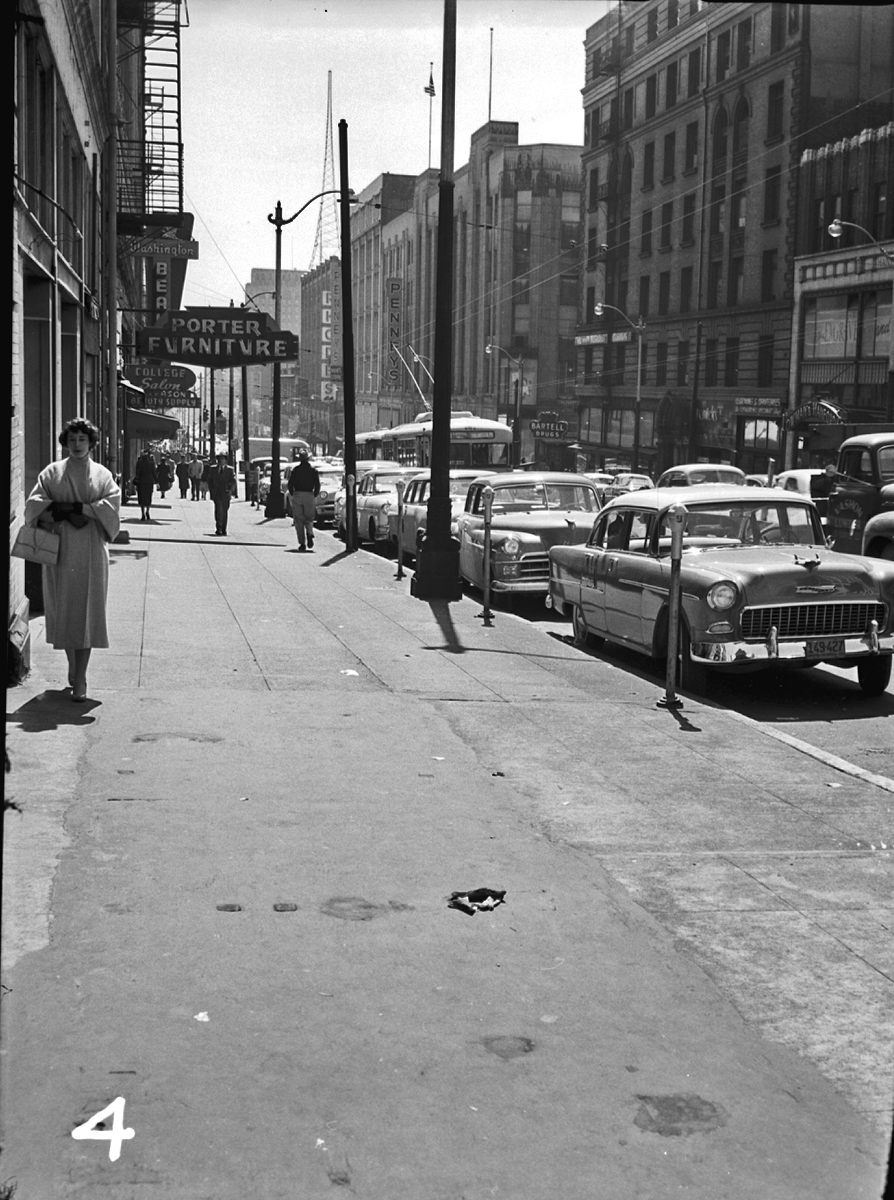This is my first comparison review. Both the Smith-Corona Skyriter and Brother Opus 889 are tied in position for my favorite typewriter, for different reasons.
I like the Skyriter for its compact size, and sleek lines. I like the Brother for its performance, its lines, and its ease of use. That being said, I should also point out that the Brother uses a standard ribbon, while the Skyriter requires a respooled ribbon. The Brother Opus also features a tabulator, which, while preset, is just as useful as a keyset tabulator. While the Brother is only 3 1/2 inches tall, it feels better than a full-size portable, and has a full 88-character keyboard. My Brother also comes with all of its original paperwork (including its tags) and a catalog from Brother's Unique Boutique. It was one of the most popular typewriters ever, with ten million typewriters sold between 1961 and 1981. Of these ten million, 92% were destined for export. Many were sold by large department store chains (Woolworth's, Western Auto, Montgomery Ward's, and K-Mart). An excellent example of a Brother portable sold by a department store is the Wizard Truetype, which was made for Western Auto. Apart from different badging, the two typewriters are identical. The Skyriter also had a department store version, called the Tower Chieftain (made for Sears). It is also identical to the Skyriter apart from its badging. Both the Brother and Skyriter come in soft cases. While the Brother's case has one handle, the Skyriter has two. This makes it much more comfortable for carrying. Also, the Brother weighs fourteen pounds in its case, while the Skyriter weighs nine. The handle on the Brother is made of metal, which is covered in metal, while the handles on the Skyriter are thick vinyl. The handles on the Skyriter's case are much easier to replace than those on the Brother's case.
The Brother uses standard 2-inch ribbon spools, while the Skyriter uses a special ribbon spool, with a hole between that of a standard ribbon and that of a prewar Remington portable. While the Brother can type in two colors and cut stencils, the user has to remove the Skyriter's ribbon to cut a stencil, and cannot type in red. The Brother not only has a preset tabulator, it also has a repeat spacer, for moving rapidly across the page. The paper supports on the Skyriter are like rabbit ears, and have to be pushed up manually; the paper support on the Brother is actuated by pushing a button on the rear of the carriage. While the Skyriter's keyboard feels small, the Brother's feels like it is the perfect size--not too large or too small. Part of the reason for this is the keyboard angle. The keyboard on the Skyriter is much flatter than that on the Brother. This makes the typewriter much flatter, but also less comfortable to use for long periods.
The ribbon is very easy to access on both the Brother and the Skyriter. However, it is much harder to change a ribbon on the Skyriter, due to the fact that two pins on the spool have to line up with two small notches on the spindle. In comparison, the spool just drops into place on the Brother. It is also much easier to feed the ribbon through the ribbon carrier on the Brother, as it does not have to be pushed up and then down, like on the Skyriter.
While the Skyriter was only ever available in a choice of one color, Brother offered different models in different colors, all with the same design. Some models, like the Brother Prestige 688, were offered in two-tone paint schemes. Others like the Brother Prestige, had twelve-inch carriages:
![]() |
| Brother Prestige 688 in Harvest Gold and Brown |
![]() |
| Brotehr Prestige, with 12-inch carriage. |
![]() |
| My 1970 Brother Opus 889 |
![]() |
| My 1959 Smith-Corona Skyriter |







